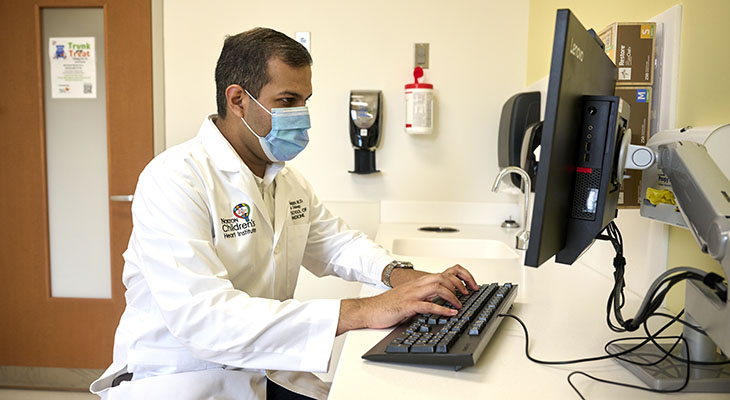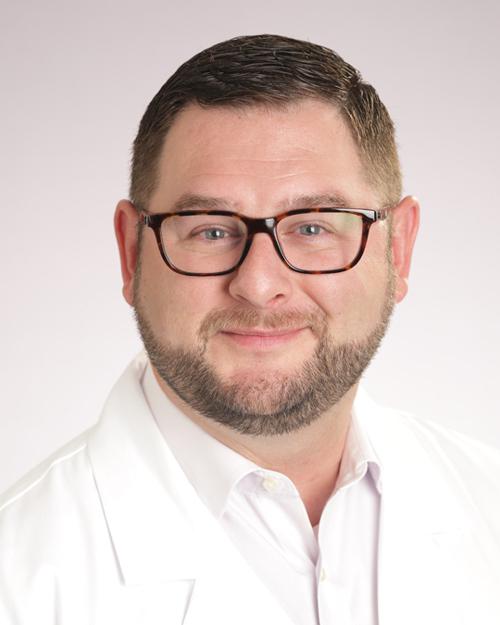A new intraoperative technique during complex congenital heart surgeries allows us to map the location of conduction tissue, reducing the risk of heart block.

A new intraoperative technique during complex congenital heart surgeries allows us to map the location of conduction tissue.
This is important, because damage to the tissue during surgery can result in a condition called heart block, where the heart does not revert to its preoperative rhythm. Children with heart block may require pacemakers for the rest of their lives.
The intraoperative mapping is key, because the conduction system on the inner surface of the heart is invisible to the naked eye, and every child’s heart is a little different. This makes the precise location of the conduction tissue unpredictable, especially in children with complex congenital heart disease. When surgeons know its location, they can take steps to avoid injuring it.
The way the mapping works is straightforward. Once the surgeon opens the chest, while the heart is still beating, the surgeon and the electrophysiologist use catheters to get intracardiac electrograms from inside the heart. To get an idea what these look like, picture a strawlike device with little poles on the end.
We start where we expect the conduction tissue to be and move the catheter until we find the tissue, called the bundle of His. Since we are in the operating room, we can communicate with the surgeon in real time about the location of this vital tissue.
This is especially important in cases like biventricular repair. These children have complex heart anatomy and an unpredictable location of their bundle of His. Without intraoperative mapping, up to 25% of biventricular repairs in complex congenital heart defect surgeries have resulted in heart block, requiring permanent pacemaker implantation.
Using the new intraoperative mapping technique, we are able to give the surgeon a precise road map of the heart they are operating on. This is information they simply did not have previously and wouldn’t have without this advance in electrophysiology.
The procedure only lengthens the operation by approximately 15 to 20 minutes, and there are no known serious adverse effects associated with the mapping.
Refer a patient
To refer a patient to Norton Children’s Heart Institute, visit Norton EpicLink and open an order for Pediatric Cardiology.
Without knowing exactly where the bundle of His is located in a particular patient, surgeons do their best to avoid it, but may damage the tissue inadvertently. For example, they may unknowingly place sutures in a way that blocks conduction.
Most of the time, this is transient. Once a patient heals, normal electrical traffic returns to the heart. In some cases, it is permanent. In these cases, children receive pacemakers, which have batteries that will need to be replaced and wires that may need revision. It may necessitate sports restrictions for the rest of their lives.
I did my electrophysiology training at Boston Children’s Hospital, which has pioneered this intraoperative mapping technique and has seen a decrease in the incidence of heart block since they started using this new technique.
A pilot study of 31 cases at Boston Children’s Hospital showed the mapping technique worked to help surgeons guide biventricular repair in patients with complex congenital heart disease.
At Norton Children’s Heart Institute, affiliated with the UofL School of Medicine, I did the intraoperative conduction mapping for the first time at Norton Children’s Hospital in a successful surgery performed in August 2022 by Deborah J. Kozik, D.O., making us one of the few other centers nationally to use this technique.
At Norton Children’s Heart Institute, we know every child is unique. Every heart is unique, too. This advance in electrophysiology helps surgeons see the heart they are operating on in ways that were impossible until recently, reducing the chance of heart block in the process. There are no significant downsides to this intraoperative mapping, and the benefits are huge.
Soham Dasgupta, M.D., is a pediatric cardiologist with Norton Children’s Heart Institute.

